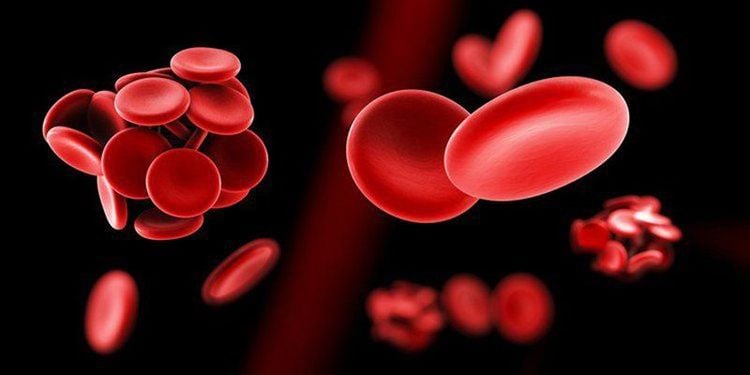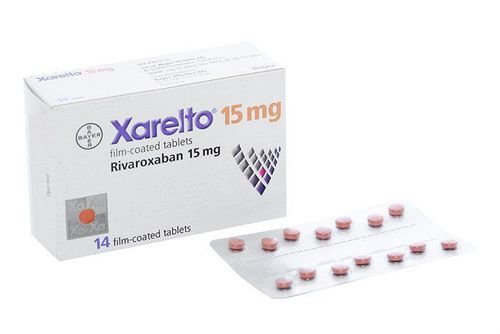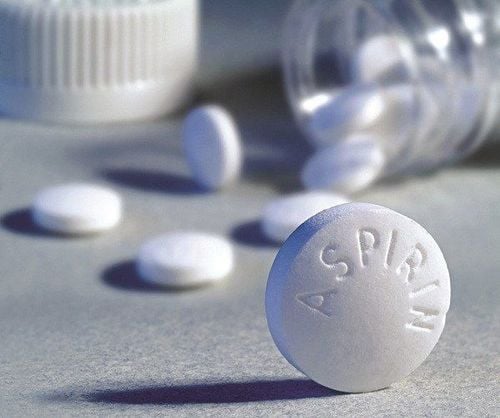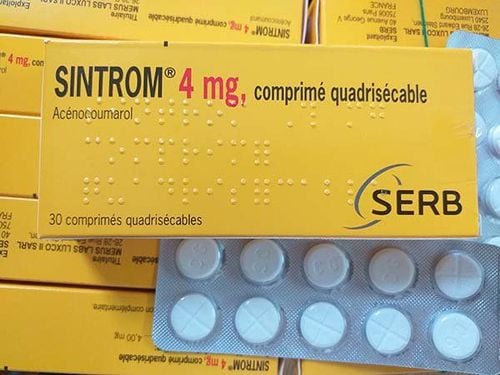This is an automatically translated article.
Coronary stenting is a procedure to help relieve angina, reduce the risk of myocardial infarction for patients. To avoid unpredictable complications, patients need to use anticoagulants after stenting. So how should coronary intervention patients with atrial fibrillation use anticoagulants to limit complications?
1. Why should anticoagulation drugs be used after coronary intervention in patients with atrial fibrillation/artificial heart valve?
The advent of coronary stent technology has minimized the risk of coronary artery stenosis after balloon intervention. However, this technique can also cause many complications after coronary stenting. People with acute coronary syndrome may have a blood clot in the coronary artery - thrombosis after stenting.
Although the frequency of stent thrombosis is low, it is a serious complication and can be life-threatening. Stent embolism is an acute occlusion of a previously catheterized stent. This complication can lead to heart attack and sudden death.
Therefore, antithrombotic therapy in acute coronary syndromes with antiplatelet and anticoagulation is required. Antiplatelet therapy includes aspirin and clopidogrel in appropriate doses. Anticoagulation treatment will have some appropriate adjustments in each situation.

Sử dụng thuốc chống đông để giảm nguy cơ người bệnh bị xuất hiện huyết khối sau đặt stent
2. What drugs are often prescribed, how to use anticoagulants in patients with coronary intervention?
Anticoagulants indicated in patients after coronary intervention include:
2.1 Unfractionated Heparin Unfractionated heparin exhibits anticoagulant effect with the participation of antithrombin (a protein present in plasma). ). The heparin molecule acts as a station for antithrombin and clotting factors to bind together. After combining with antithrombin, coagulation factors are inactivated.
Heparin can only be used intravenously or subcutaneously. The half-life of heparin is dose dependent: macrophages, endothelial cells, kidney. In the treatment of acute coronary syndromes, the initial heparin dose is: loading dose of 60-70 units/kg, followed by intravenous infusion of 12-15 units/kg/hour.
Unfractionated heparin has 2 main side effects: Bleeding and thrombocytopenia. The risk of bleeding is increased in elderly patients (over 65 years of age) with renal impairment and taking certain medications. In addition, this drug can cause osteoporosis with prolonged use, skin necrosis, hair loss, hair loss or allergic reactions (very rare).
2.2 Low Molecular Weight Heparin Low Molecular Weight Heparin exhibits anticoagulant effect with the participation of antithrombin. Drugs that inhibit tissue factor coagulation by inactivation of Xa.
When administered subcutaneously, low molecular weight heparin has a bioavailability of approximately 90%. The half-life after subcutaneous administration is 3 to 6 hours, independent of dose. The drug is excreted by the kidneys, so the half-life is increased in patients with renal impairment.
In treatment, the dose of low molecular weight heparin is calculated according to body weight. Its side effects are possible bleeding, thrombocytopenia, osteoporosis (lower frequency than when using unfractionated heparin).
2.3 Vitamin K antagonists Vitamin K antagonists include warfarin, phenprocoumon, acenocoumarol and ethyl biscoum acetate. The mechanism of action of the drug is inhibition of the synthesis of the active form of vitamin K-dependent coagulation factors (factors II, VII, IX and X).
Vitamin K antagonists are well absorbed by the body orally. They are metabolized in the liver and excreted in the urine. The half-life of warfarin is 36 hours, and that of acenocoumarol is 10 hours, administered 1-2 times a day. The drug should be started at a low dose (warfarin 5-10mg/day, acenocoumarol 2-4mg/day).
Patients treated with vitamin K antagonists are at risk of severe bleeding complications. In that case, appropriate intervention and treatment measures are required.

Trên đây là một số loại thuốc chống đông sau đặt stent ở bệnh nhân rung nhĩ thường được chỉ định
3. Notes in the use of anticoagulants after coronary intervention in patients with atrial fibrillation
Atrial fibrillation increases the risk of stroke and death. When using anticoagulants for patients with coronary artery disease with atrial fibrillation / prosthetic heart valve, it is necessary to pay attention to:
When using dose-adjusted vitamin K antagonists, it is necessary to control the anticoagulation effect well with the duration of treatment in the range of over 70%; When administering vitamin K antagonists to patients with low-dose clopidogrel and/or aspirin, the effects of vitamin K antagonists should be closely monitored with a target INR of 2.0 - 2.5; When non-vitamin K antagonist anticoagulants are used in combination with clopidogrel and/or low-dose aspirin, the low dose that has been shown to prevent stroke in patients with atrial fibrillation should be used; In patients with atrial fibrillation with stable vascular disease (no acute ischemic events or revascularization for more than 1 year), treatment with oral anticoagulation alone should be considered; The new P2Y12 receptor blockers (Prasugrel and Ticagrelor) are not recommended for routine use as part of triple anticoagulation therapy in patients with atrial fibrillation. The use of Prasugrel and Ticagrelor in combination with oral anticoagulants should only be considered in certain situations; In patients with stable chronic coronary artery disease and atrial fibrillation who undergo percutaneous coronary intervention at low risk of bleeding, a triple therapy (including oral anticoagulants, clopidogrel 75 mg/day and aspirin 75 - should be used). 100mg/day) for a minimum of 4 weeks and no more than 6 months after the intervention. Followed by 2 drugs with oral anticoagulant (or vitamin K antagonist or NOAC) and clopidogrel 75mg/day (or Aspirin 75-100mg/day) continued for up to 12 months; Atrial fibrillation patients with ST-segment elevation myocardial infarction can be treated with primary PCI, aspirin, unfractionated heparin or bivalirudin, clopidogrel, and discontinuation of glycoprotein IIb/IIIa inhibitors. (used in some salvage cases). Sometimes oral anticoagulants should be temporarily discontinued (in view of bleeding risk). Routine use of new Glycoprotein IIb/IIIa and P2Y12 inhibitors is not recommended; Patients with atrial fibrillation with mechanical heart valves are at increased risk for thromboembolism or prosthetic valve thrombosis if vitamin K antagonists are discontinued. These patients should undergo an anticoagulation-based intervention. In the presence of vitamin K antagonists, the mean INR is as low as possible within the therapeutic range (based on risk factors and the potential for thrombosis of the prosthetic heart valve). When using anticoagulation after stenting in patients with atrial fibrillation/prosthetic heart valves, it is necessary to strictly follow the doctor's recommendations and follow up on time to ensure the best treatment effect.
Please dial HOTLINE for more information or register for an appointment HERE. Download MyVinmec app to make appointments faster and to manage your bookings easily.













